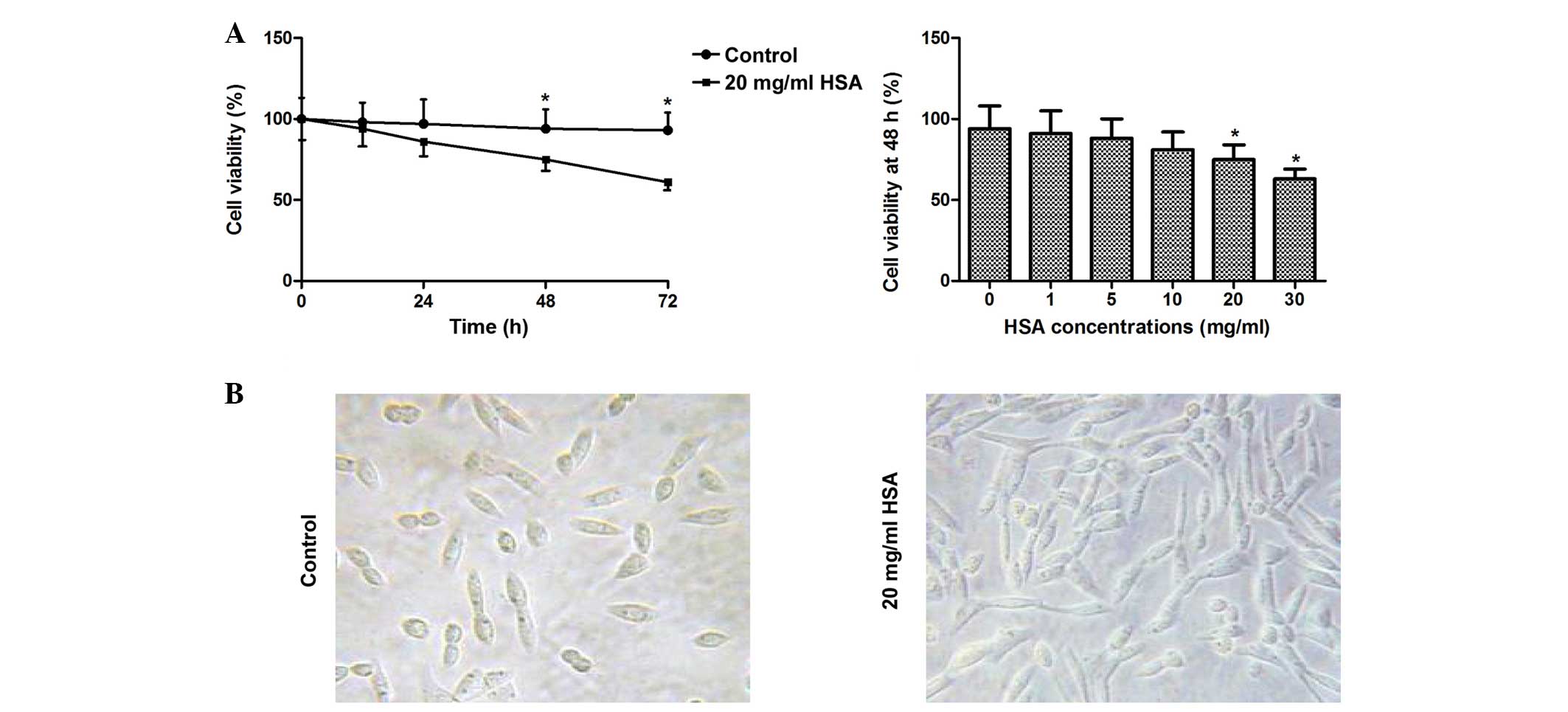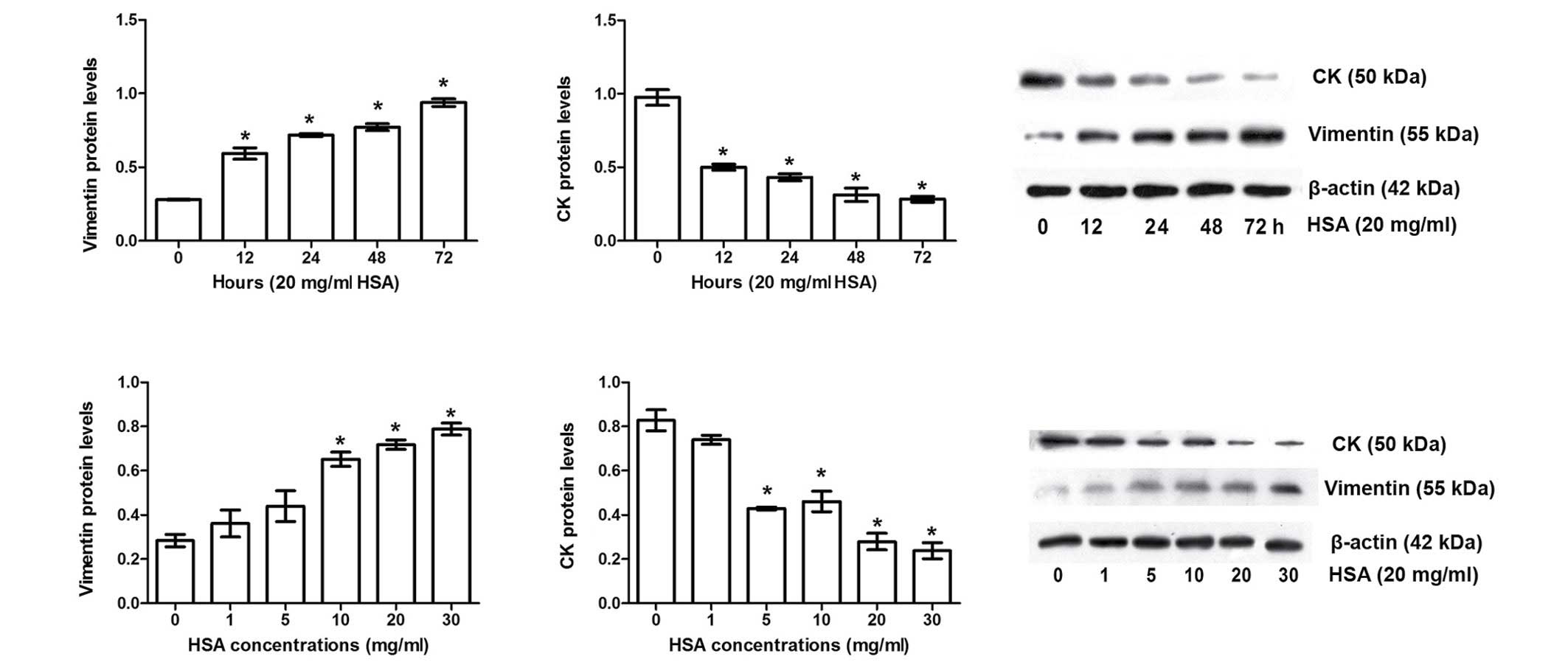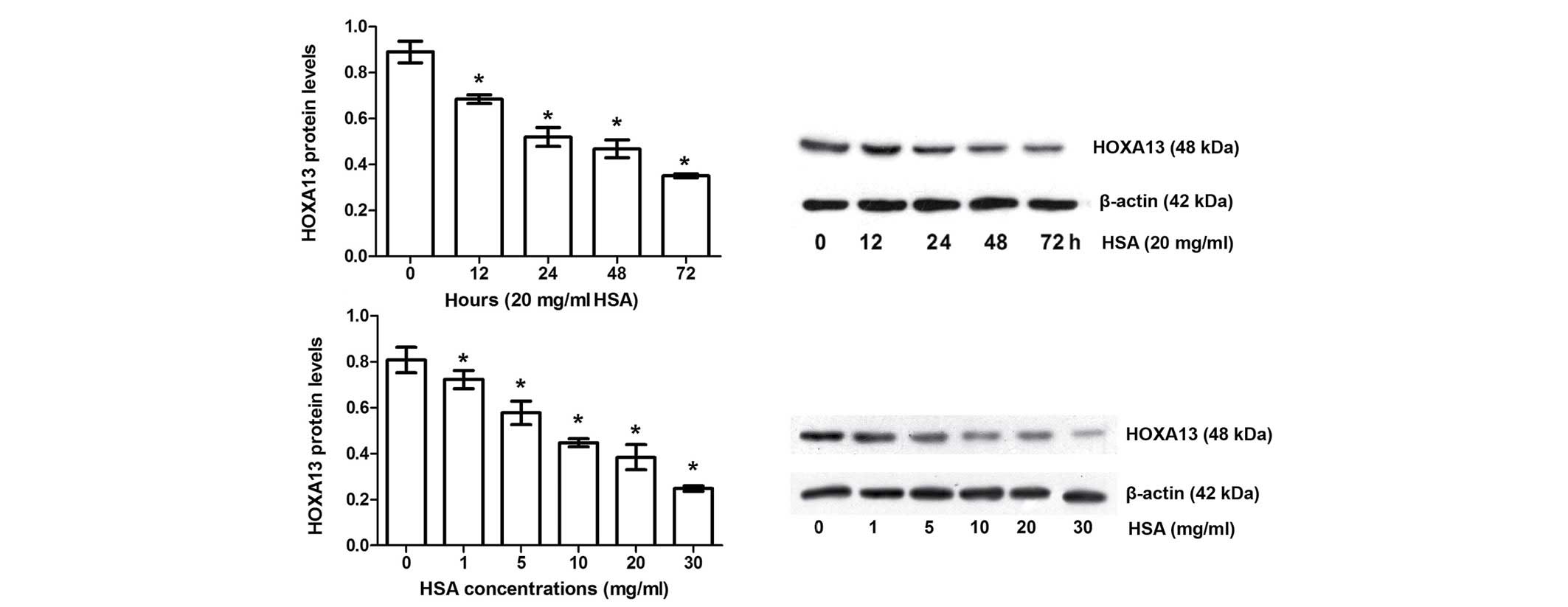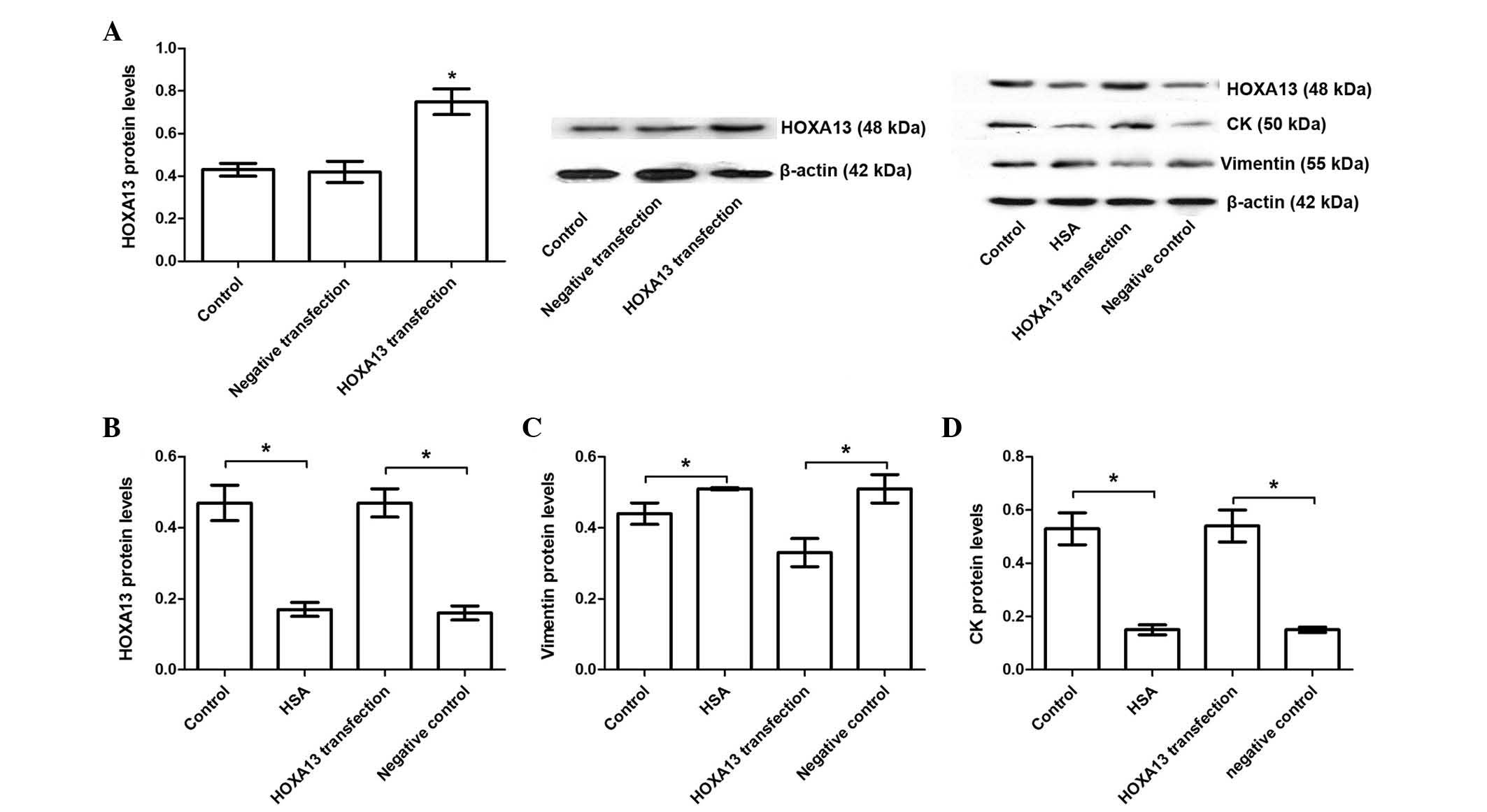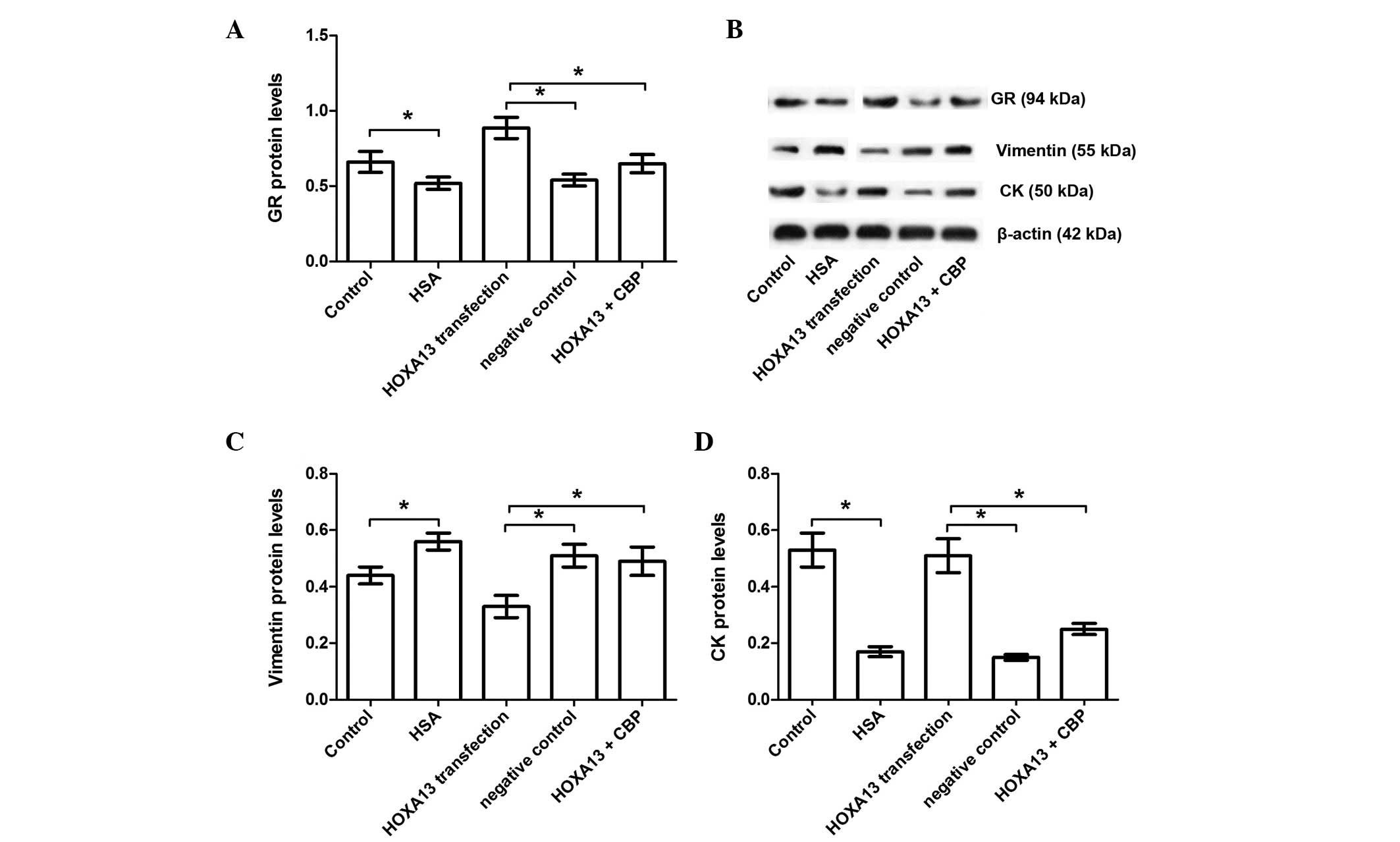|
1
|
Zununi Vahed S, Samadi N and Ardalan M:
Diagnosis of interstitial fibrosis and tubular atrophy in kidney
allograft: Implementation of microRNAs. Iran J Kidney Dis. 8:4–12.
2014.PubMed/NCBI
|
|
2
|
Grande MT and López-Novoa JM: Fibroblast
activation and myofibroblast generation in obstructive nephropathy.
Nat Rev Nephrol. 5:319–328. 2009. View Article : Google Scholar : PubMed/NCBI
|
|
3
|
Li Y, Sun Y, Liu F, Sun L, Li J, Duan S,
Liu H, Peng Y, Xiao L, Liu Y, et al: Norcantharidin inhibits renal
interstitial fibrosis by blocking the tubular
epithelial-mesenchymal transition. PLoS One. 8:e663562013.
View Article : Google Scholar : PubMed/NCBI
|
|
4
|
Hamasaki Y, Doi K, Okamoto K, Ijichi H,
Seki G, Maeda-Mamiya R, Fujita T and Noiri E:
3-Hydroxy-3-methylglutaryl-coenzyme A reductase inhibitor
simvastatin ameliorates renal fibrosis through HOXA13-USAG-1
pathway. Lab Invest. 92:1161–1170. 2012. View Article : Google Scholar : PubMed/NCBI
|
|
5
|
Williams TM, Williams ME, Heaton JH,
Gelehrter TD and Innis JW: Group 13 HOX proteins interact with the
MH2 domain of R-Smads and modulate Smad transcriptional activation
functions independent of HOX DNA-binding capability. Nucleic Acids
Res. 33:4475–4484. 2005. View Article : Google Scholar : PubMed/NCBI
|
|
6
|
Tirino V, Camerlingo R, Bifulco K, Irollo
E, Montella R, Paino F, Sessa G, Carriero MV, Normanno N, Rocco G
and Pirozzi G: TGF-β1 exposure induces epithelial to mesenchymal
transition both in CSCs and non-CSCs of the A549 cell line, leading
to an increase of migration ability in the CD133+ A549
cell fraction. Cell Death Dis. 4:e6202013. View Article : Google Scholar
|
|
7
|
Chen P, Jiang T, Ouyang J and Cui Y:
Glucocorticoid receptor auto-upregulation and its relation with
glucocorticoid sensitivity in idiopathic nephrotic syndrome. Int
Urol Nephrol. 43:167–174. 2011. View Article : Google Scholar
|
|
8
|
Ratman D, Vanden Berghe W, Dejager L,
Libert C, Tavernier J, Beck IM and De Bosscher K: How
glucocorticoid receptors modulate the activity of other
transcription factors: A scope beyond tethering. Mol Cell
Endocrinol. 380:41–54. 2013. View Article : Google Scholar
|
|
9
|
Carlotti AP, Franco PB, Elias LL,
Facincani I, Costa EL, Foss N, Moreira AC and de Castro M:
Glucocorticoid receptors, in vitro steroid sensitivity and cytokine
secretion in idiopathic nephrotic syndrome. Kidney Int. 65:403–408.
2004. View Article : Google Scholar : PubMed/NCBI
|
|
10
|
Zhang L, He QN, Zhu M, Zhou G, Ding JJ,
Zhou P, Wu XC and Yi ZW: Effect of glucocorticoid receptor beta on
glucocorticoid action in glomerular mesangial cells. Zhong Nan Da
Xue Xue Bao Yi Xue Ban. 32:941–948. 2007.
|
|
11
|
Yin J, Ren W, Liu G, Duan J, Yang G, Wu L,
Li T and Yin Y: Birth oxidative stress and the development of an
antioxidant system in newborn piglets. Free Radic Res.
47:1027–1035. 2013. View Article : Google Scholar : PubMed/NCBI
|
|
12
|
Yin J, Duan J, Cui Z, Ren W, Li T and Yin
Y: Hydrogen peroxide-induced oxidative stress activates NF-κB and
Nrf2/Keap1 signals and triggers autophagy in piglets. RSC Adv.
5:15479–15486. 2015. View Article : Google Scholar
|
|
13
|
Yin J, Ren W, Duan J, Wu L, Chen S, Li T,
Yin Y and Wu G: Dietary arginine supplementation enhances
intestinal expression of SLC7A7 and SLC7A1 and ameliorates growth
depression in mycotoxin-challenged pigs. Amino Acids. 46:883–892.
2014. View Article : Google Scholar
|
|
14
|
Yin J, Wu MM, Xiao H, Ren WK, Duan JL,
Yang G, Li TJ and Yin YL: Development of an antioxidant system
after early weaning in piglets. J Anim Sci. 92:612–619. 2014.
View Article : Google Scholar
|
|
15
|
Kallergi G, Papadaki MA, Politaki E,
Mavroudis D, Georgoulias V and Agelaki S: Epithelial to mesenchymal
transition markers expressed in circulating tumour cells of early
and metastatic breast cancer patients. Breast Cancer Res.
13:R592011. View
Article : Google Scholar : PubMed/NCBI
|
|
16
|
Igleslas J, Abernethy VE, Wang Z,
Lieberthal W, Koh JS and Levine JS: Albumin is a major serum
survival factor for renal tubular cells and macrophages through
scavenging of ROS. Am J Physiol. 277:F711–F722. 1999.
|
|
17
|
Ibrini J, Fadel S, Chana RS, Brunskill N,
Wagner B, Johnson TS and El Nahas AM: Albumin-induced epithelial
mesenchymal transformation. Nephron Exp Nephrol. 120:e91–e102.
2012. View Article : Google Scholar : PubMed/NCBI
|
|
18
|
Dressler GR: An update on the vertebrate
homeobox. Trends Genet. 5:129–131. 1989. View Article : Google Scholar : PubMed/NCBI
|
|
19
|
Utsch B, Becker K, Brock D, Lentze MJ,
Bidlingmaier F and Ludwig M: A novel stable polyalanine [poly(A)]
expansion in the HOXA13 gene associated with hand-foot-genital
syndrome: Proper function of poly(A)-harbouring transcription
factors depends on a critical repeat length? Hum Genet.
110:488–494. 2002. View Article : Google Scholar : PubMed/NCBI
|
|
20
|
Kino T, Nordeen SK and Chrousos GP:
Conditional modulation of glucocorticoid receptor activities by
CREB-binding protein (CBP) and p300. J Steroid Biochem Mol Biol.
70:15–25. 1999. View Article : Google Scholar : PubMed/NCBI
|















